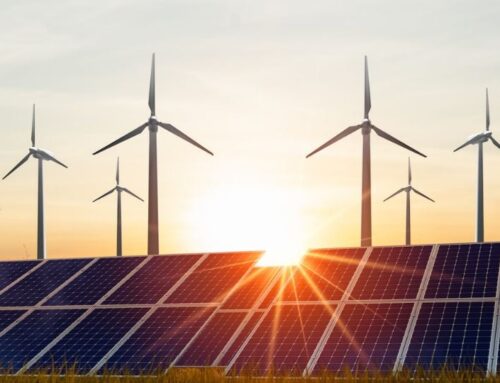Renewables Are Soaring, But Not High Enough To Foil Climate Impact
September 24, 2024

Renewables were on the wish list when I began covering the energy sector and its impact on the climate crisis in the 1990s. In 2023, developers and power companies added a record 473 gigawatts of green energy globally, most of which was cheaper than traditional fossil fuel alternatives.
We’ve come a long way, boosting job growth and improving air quality. However, it is still not far enough to meet the Paris Climate Agreement’s aims—keeping temperatures in check and preventing environmental and economic distress. That’s according to the International Renewable Energy Agency (IRENA), which released its “Renewable Power Generation Costs in 2023.”
The mission is to triple the use of renewables and hit 11.2 terawatts by 2030, adding an average of 1,044 gigawatts of new capacity annually. We must reduce CO2 levels by 43% by 2030 and 60% by 2035.
“We have no excuse for failing,” says IRENA’s Director-General Francesco La Camera in a virtual call with me. “Failing to expedite the energy transition will result in dire consequences, including escalating financial catastrophes.”
The threat is not imaginary. We frequently experience extreme weather events that affect everyone, including the most insulated individuals. The global crisis requires an international solution.
Consider Pakistan: The global consultancy McKinsey says that unless climate change is addressed and controlled, 30% of that nation will be uninhabitable in 2050. Twice this decade, the country has been under water. Those at the bottom of the economic pyramid suffer the most. Recently, a heatwave led to a glacier melt, exacerbated by heavy rains. It destroyed communities and created a disaster.
In Honduras, 500 people leave per day—a byproduct of many factors, including a 74% poverty rate. Its primary goal is to win climate financing to preserve its rainforests, curb warming, and prevent migration by creating jobs. Meantime, Africa is the second most populated continent, with 1.3 billion people. Climate change costs $5 billion to $7 billion yearly—projected to rise to $50 billion by 2030. According to the United Nations, Africa contributes about 3% of global greenhouse gas emissions, while the 20 most affluent nations comprise 87%.
The Shift To Renewables Is Unstoppable
MILAN, ITALY – OCTOBER 31: A man is seen on a bicycle trying to ride a flooded street after the city … [+]
Getty Images
Climate negotiators want to limit temperature peaks to no more than 1.5 degrees Celsius by mid-century compared to pre-industrial levels to mitigate droughts, floods, and food shortages. Scientists say we are nearing the 1.2 degrees mark and on track to hit 2.7 degrees. Before Paris, the trend was 4 degrees Celsius. Soaring temperatures lead to more frequent natural disasters.
La Camera believes the shift towards a more sustainable energy future is unstoppable. Since 2020, wind and solar energy prices have dropped significantly, resulting in a $55 billion savings for consumers compared to alternative fuels. If the global community can meet Paris’ renewable targets, the worldwide gross domestic product would increase by 2.4%.
The main barrier is not the naysayers, who will forego economic opportunities and won’t attract top-tier talent. The biggest challenge is ensuring that the energy infrastructure is developed and modernized.
“We must prioritize the development of emerging nations and establish a new energy infrastructure. says IRENA’s La Camera. “We must accelerate the energy transition by overcoming these existing barriers. A centralized energy system needs a way to connect—the flexibility to move electrons to where they are needed.”
Indeed, forward-thinking leaders are working to draw the intellectual and financial capital necessary to advance the green energy economy. According to Energy Innovation, this is a crucial rationale behind enacting the Inflation Reduction Act, Bipartisan Infrastructure Law, and CHIPS and Science Act —measures that have spurred more than $500 billion in private investments while creating more than 6.2 million new jobs during Joe Biden’s presidency.
IRENA reports that green energy costs are rapidly falling: 12% for solar photovoltaics, 3% for onshore wind, 7% for offshore wind, 4% for concentrating solar power, and 7% for hydropower. Meanwhile, the costs of battery storage projects have decreased by 89% between 2010 and 2023, making it easier to integrate large amounts of solar and wind capacity by addressing grid infrastructure challenges.
Despite this progress, however, we are playing catch up. Pierre Friedlingstein of Exeter’s Global Systems Institute said temperatures rose 1.1 degrees Celsius in 2023. And if nothing changes—fossil fuel usage and deforestation rates remain unchanged—then we will hit 1.5 degrees in 2030. That means more extreme weather patterns.
The Urgency Is Paramount
MADRID, SPAIN – FEBRUARY 20: The Director General of the International Renewable Energy Agency … [+]
Europa Press via Getty Images
Ice sheets in Greenland and West Antarctica are already disappearing, coral reefs are under threat, and sea levels in Boston and New York are rising, which could lead to more frequent and intense coastal flooding.
But don’t despair. The corporate world is responding to the conundrum. Tim Lenton, a professor of climate change at the University of Exeter, points to Tesla and Volvo, which are setting an example in the automotive sector. He told me that every industry has its leaders and laggards. That’s okay, he insists, noting that the early adopters can move an entire marketplace.
“The economic case for the green energy transition is strong,” says La Camera. “We are moving to a new energy system, and no one can stop it. Renewables will dominate it, and hydrogen and biomass will complement it. But do we have time? If we don’t reduce our CO2 emissions by 43% by 2030 and 60% by 2035, we will lose economic productivity and agricultural capacity.”
The developing nations implicitly understand warming’s gravity. And now, La Camera adds that even the richest amongst us can’t hide. Witness the California wildfires and recent flooding in Milan, Italy. “The most important variable is time. We can’t do later what we can do now.”
The urgency is paramount: Many are devoted to caring for family—providing food, education, and healthcare. Climate change is, therefore, a more distant concern. However, the phenomenon affects every aspect of our existence and will impact our living conditions and economic well being.
Search
RECENT PRESS RELEASES
Related Post




